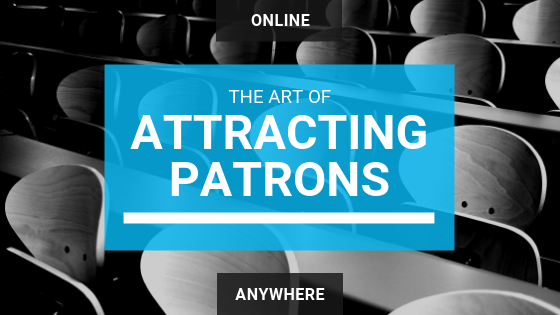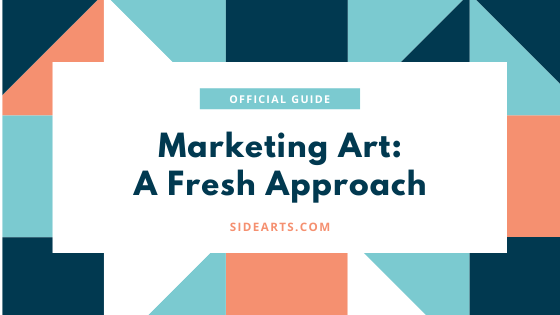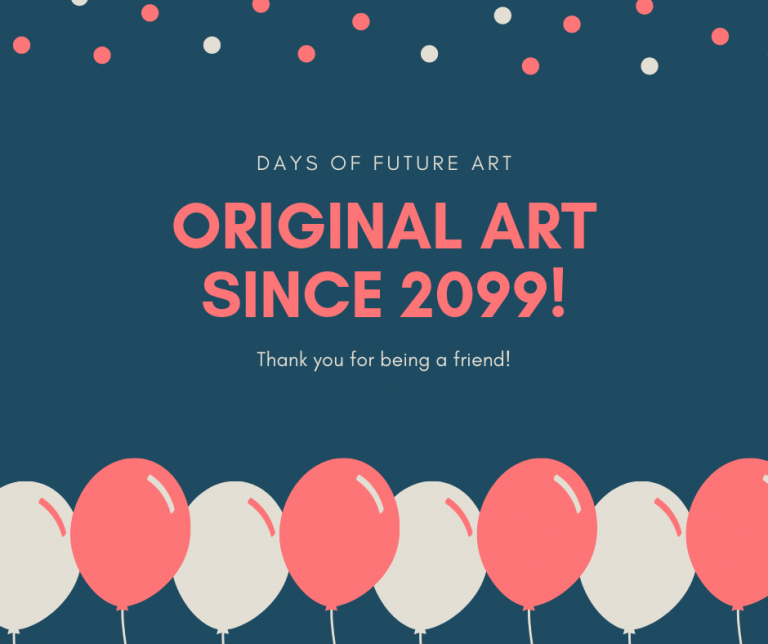William Brown is a Side Arts Certified Visual Artist from Atlanta, Georgia.
William Brown became a photographer in the 1970s after leaving a graduate program in psychology. He received an MFA from the University of Florida. William helped found the Contemporary Art Center in Atlanta and the studio program at Emory University where he taught for over 40 years. His work merges conventions from photography, film, sculpture, and painting. William has extensive experience with international and national exhibitions, primarily in video.
William’s current project, Paintings for a Robot, uses digital techniques to generate montage images intended for rendering by robotic painting devices. His current experiments involve creating a range of photo montages based on public domain artworks that are readily available on museum web sites. Sometimes, he digitally cuts and pastes, creating new configurations based on the work of famous artists from the past. Other times, he overlays up to five historical works, creating a new multiple-exposure, single image. Some works mix similar types of images from different artists on a theme such as images of common people.
This brave new world of machine fine art painting signals a new singularity between photography, digital image manipulation, and oil painting. William believes that distinctions between these seemingly unique media will collapse.
See more work, visit william-brown-bzhc.squarespace.com.
![William Brown [Certified Visual Artist - Atlanta, GA]](https://sidearts.com/wp-content/uploads/2022/06/2.png)
![William Brown [Certified Visual Artist - Atlanta, GA]](https://sidearts.com/wp-content/uploads/2022/06/3.png)
...
Ayafor Leonel is a Side Arts Certified Visual Artist from Yaounde, Cameroon.
Ayafor Leonel is artistically called Sunng Nnu, a masters student at the University of Yaoundé I studying performing arts and cinematography. Sunng Nnu is an astral painter. His style is called Astral Navigational Painting which is a painting concept that he has been developing for the past thirteen years. He hopes that the style will grow as a tool of innovation and education. He has participated in workshops that have helped him promote his painting ideological experience, imagination, and spirituality.
To realize his dream, Ayafor has organized personal solo exhibitions in Yaoundé and Bamenda under the Astral Navigational theme to promote and made known the ideology and concept. As a painter, he has taken part in the Beijing international arts Biennale in 2015 where he was one of the three artists called upon to represent Cameroon. Locally, he has taken part in the international festival of arts and culture organized by the Cameroon’s Ministry of Arts and Culture.
To see more work, visit: instagram.com/abstralleo
![Ayafor Leonel [Certified Visual Artist - Yaounde, Cameroon]](https://sidearts.com/wp-content/uploads/2023/06/3.png)
![Ayafor Leonel [Certified Visual Artist - Yaounde, Cameroon]](https://sidearts.com/wp-content/uploads/2023/06/2.png)
...
Traci Meitzler is a Side Arts Certified Visual Artist from Gilbertsville, Pennsylvania.
As an artist, Traci Meitzler works hard to develop art that speaks both to her and others about her emotions and frame of mind while creating. She classifies her style as chaotic architecture. Traci enjoys the juxtaposition of straight edges with organic curves. She believes that a painting or any design cannot have just one element, but that each element exists in harmony because of the others.
Traci creates artwork using acrylic mediums along with other materials such as marker, charcoal, spray paint, and modeling paste. She likes to add non-standard items to create texture such as clear acrylic sheets, textured wallpaper, cheese cloth, and coarse sand.
To see more work, visit mad7studio.com
![Traci Meitzler [Certified Visual Artist - Gilbertsville, PA]](https://sidearts.com/wp-content/uploads/2021/05/2-1.png)
...
John Edwe is a Side Arts Certified Visual Artist from Philadelphia, Pennsylvania.
Group Exhibitions
- Hamilton Street Gallery, Bound Brook, New Jersey (2022)
- Luxembourg Art Prize, Luxembourg, Luxembourg (2021)
- Pleiades Gallery, New York, New York (2020)
- Gallery Zero, Milan, Italy (2017)
- Hamilton Street Gallery, Bound Brook, New Jersey, Curated by Brian McCormack (2016)
- Galerie Metanoia, Paris, France, Curated by Marc Hinnonet (2015)
- Hamilton Street Gallery, Bound Brook, New Jersey, Curated by Brian McCormack (2015)
- Second Saturday Gallery, York, Pennsylvania, Curated by Ken Husband (2015)
- Gallery La La Artisan Market, New York, New York (2015)
- Institut Francais, Port-Au-Prince, Haiti (2010)
- Sande Webster Gallery, Philadelphia, Pennsylvania (2004)
- Pennsylvania Convention Center, Harrisburg, Pennsylvania (2004)
- Gallery One, Philadelphia, Pennsylvania (2003)
- Pratt Institute, Brooklyn, New York (2001)
Solo Exhibitions
- Haitian Embassy Brussel, Belgium (2018)
- Liberty Shop, Philadelphia, Pennsylvania (2013)
- Academy Art University, San Francisco, California (2009)
- University of the Arts, Philadelphia, Pennsylvania (2005)
Commission
- Fresco, Ambassador of Jesus Christ (Church), Brooklyn New York (2002)
Education
- MFA Academy Art University, San Francisco, California (2009)
- BFA University of the Arts, Philadelphia, Pennsylvania (2005)
See more work, visit johnedwe.com.
![John Edwe [Certified Visual Artist - Philadelphia, PA]](https://sidearts.com/wp-content/uploads/2022/05/2-1.png)
![John Edwe [Certified Visual Artist - Philadelphia, PA]](https://sidearts.com/wp-content/uploads/2022/05/3.png)
...
Carlos Alves is a Side Arts Certified Visual Artist from Miami, Florida.
Carlos Alves has been serious about art since he was a child. It shows in his passion for making things out of clay, glass, metal, salvaged artifacts, and recycled objects. His mission to make art from anything is encapsulated in his motto, “Chip it, crack it, smash it. Put it back together and give it whole new life.” He draws from his Cuban / Puerto Rican roots and South Florida upbringing, communicating the themes that encompass love, hope, history, culture, politics, nature, and a kinship with the sea.
Education
Carlos graduated with a Masters in Fine Art from Illinois State University, Bachelor of Fine Art from the University of Miami, and scholarship to Scuola Lorenzo Di Medici in Florence, Italy. He started his post-college career with a free-flowing tile installation located on the floor and walls of the Art Center South Florida. The project eventually led to commissions by several public and private clients in the United States, London, and Hong Kong. He is excited by making artwork that is seen in large public art settings such as airports, parks, fountains, courthouses, libraries, restaurants, galleries, and private residences.
Public Art
Recently, Carlos designed and completed a courtyard featuring a sculpture fountain, garden benches, planters, seating rocks, and bamboo railing at a rehabilitation facility in Fort Lauderdale; mosaic sidewalk “Save Our Water” for Miami-Dade Water/Sewer Department; and entrance / ticketing area for the Port Everglades’ Holland America Terminal.
He often enjoys projects with local youth and has accomplished many public artworks working with them including “The River Poetry Project”, “The Miami Children’s Museum”, and a 186-foot mural at the entrance of the new Miami-Dade County Children’s Court House. Carlos works closely with his wife and partner of over twenty years, JC Carroll, in all aspects of public art from concept, design, and manufacturing, to completion.
Private Work
As much as Carlos enjoys the public art arena, he loves creating pieces for private clients, museums, and gallery exhibitions. He is currently working on a series, “Animal Instincts”, creating large, animal shaped clay bodies filled with recycled figurines and glass. The final piece in the series is a globe that will show the animals and sea life of each region and the fragile ecosystems of the world with emphasis on showing the planet’s need for our protection.
See more work, visit carlosalvesmosaics.com


...
Audrey Dowling is a Side Arts Certified Visual Artist from Westfield, New York.
Audrey Kay Dowling received a BS in Art Education at SUNY New Paltz and a MS from SUNY Fredonia. She works in her clay, painting, and printmaking studios full time. Audrey is an award and grant winning artist and the gallery owner of Portage Hill Art Gallery in Westfield, New York.
See more work, visit audreykaydowling.com
![Audrey Dowling [Certified Visual Artist - Westfield, NY]](https://sidearts.com/wp-content/uploads/2021/04/2-2.png)
![Audrey Dowling [Certified Visual Artist - Westfield, NY]](https://sidearts.com/wp-content/uploads/2021/04/3-1.png)
...
Pricing your artwork is an important component of your strategy for marketing art. Artwork pricing should not be an over-complicated procedure in the primary market. (Secondary market sales can be much more complicated.) If you are new to pricing your artwork, there is a formula to determine where to start.
Artwork Pricing Formula
- Start with the total costs of the materials used. Use the relative cost of only the materials used.
- Track the amount of time you actually spent creating the artwork.
- Multiply the number of hours by the rate you would charge per hour as a professional art consultant.
- Add the cost of materials and time.
- Multiply the result by a multiple based on your overall experience. This is typically between 2 (just starting out) and 10 (top of your field).
Price of Original Artwork = [Materials + (Time)(Hourly Rate)] (Experience)
For example, [$100 materials + (20 hours of work)($25/hr)] (5 years of experience adds a multiplier of 3) = $1800.
Pricing reproductions
- Highest quality (limited edition giclee prints or high-end reproductions) = 50% of the original price
- Mid-grade quality (limited edition reproductions) = 30% of the original price
- Low quality (one-off prints or open-ended reproductions) = 10% of the original price
Next Step
Are you ready to invest in yourself and showcase your artwork? Apply to become represented by Side Arts, a leading agency connecting artists with exhibition opportunities. With limited capacity and a rigorous jury review, Side Arts ensures that your work gets the attention it deserves. Click here to learn more about how Side Arts can elevate your art career and provide you with exciting opportunities to display your talent to a wider audience.
Take the leap and step into a world of endless possibilities for your artistic journey with Side Arts. Don’t miss out on this incredible chance to share your passion and creativity with the world. Apply now and open doors to a bright future as a recognized visual artist. Click here to apply.
...
Agreed, it’s much more fun to do almost anything than write a resume. How can you summarize what you do all day long into a short phrases? It’s not easy to see all your hard work in concise bullets with no context. It’s even harder for artists who strive to be creative and tell a story. And yet, you need one to apply for a job, to network with peers and colleagues, and to apply for your next award.
Ultimately, the objective of the resume is to highlight your strengths. It gives you the opportunity to move on to the next step.
Resume Tips From Jessica Saragovi
Before you start your resume, I suggest beginning with these questions. Taking the time to answer these questions will ultimately help you with your resume, the interview process and other aspects of the job search process. Write these answers down, revisit them, it’s an ongoing list and will be adapted as needed.
- What do you WANT? Is this for a grant application or for a bridge job? A different job will require a different focus and sections. This includes EVERYTHING from commute, salary (what salary structure – base, bonus and / or commission), hours, responsibilities, manager style, office set up. What’s your perfect day like?
- More importantly, what do you NOT want in your next role?
- What are your skills? These are things you know HOW to do, abilities, expertise, talents, competencies. These include both hard skills (measured, teachable and defined) and soft skills (not-measured, personality based and subjective).
- More importantly, what are your STRENGTHS? From the skills above, which ones do you LOVE to do? Strengths are skills that include an element of passion. What lights you when you talk about it? What comes easy to you and you enjoy doing?
The good news is that once you have a good foundation, it’s easy to update with your awards, exhibitions, and additional work experience. It’s important to have clear, legible fonts, the right amount of white space, and eye-friendly headings. A well-crafted, easy to read resume will help you open doors to jobs. It shows that you’re ready to be submitted for the next juried exhibition, grant, award, gallery show, commission, and residency program.
Free Resume Support
For Side Arts members, I offer a 20 minute complimentary conversation to answer questions and provide support for exactly where you are in the job search process. Request an appointment via email at systemichr@gmail.com.
—
 Jessica Saragovi is a Human Resources professional with more than two decades of experience across various industries and companies across New York, Miami, and Philadelphia. Jessica’s deep insight into how organizations hire, train, manage, and develop employees allows her to be a skilled resume writer. Jessica partners with clients in developing a resume that fully encompasses who they are, what they’ve done, and where they want to go with their next role. View my profile on LinkedIn at www.linkedin.com/in/jsaragovi.
Jessica Saragovi is a Human Resources professional with more than two decades of experience across various industries and companies across New York, Miami, and Philadelphia. Jessica’s deep insight into how organizations hire, train, manage, and develop employees allows her to be a skilled resume writer. Jessica partners with clients in developing a resume that fully encompasses who they are, what they’ve done, and where they want to go with their next role. View my profile on LinkedIn at www.linkedin.com/in/jsaragovi.
...
Calling cards, takeaways, handouts, exclusives – no matter what you call them, they help your patrons understand your identity and keep them coming back. They are an important part of your strategy for marketing art. It’s all in the details, the signature things that your supporters find surprising and endearing. Whether you are preparing for a vendor event, exhibition, or an online storefront, try to think about the extras that would make it special for your supporters.
Ideas for Calling Cards
- Packaging: Consider how you can elevate your packaging and delivery – customize the box (something patrons can use in case they need to move or ship the item), add a personalized and signed thank you note, emboss, gold leaf, and detail the package.
- Business cards: If you are going to go the extra mile and spend more on business cards, make sure that the concept aligns with your art. Typically, a basic card size is all you need. Include your name, phone number, email address, and website. Remember to include white space to write additional details.
- Signage: Banners, flags, and table covers are always important. Consider the height, having things at eye-level can catch the patron’s eyes more frequently. Draw the attention to your art.
- Postcards: Believe it or not, some folks just don’t use the internet or email, use postcards to reach them. You want to be inclusive in your marketing. Even for those that are digital natives, receiving something of value in the snail mail can be a special occasion.
- Gift tags: Most art is purchased as a gift for others. Make it easy for them by not having to also have to purchase a gift tag, card, box, or bag.
- Return address labels: If you are mailing marketing or shipping artwork, add a unique identifier to the item. That way, the person doesn’t have to guess who or what they have received before needing to open it.
- Certificates of Authenticity: Your art is special. Show patrons how special it is with a letter of provenance. It elevates the art and provides another means for patrons to remember you. Remember to include the item’s description and story, your contact information, and personalized signature.
It is especially important to think about things that have value beyond one use items. For example, stamp a business card with a unique qualifier for an online storefront discount. Gift bags and totes can be re-used. Certificates of authenticity can be saved and framed with the artwork.

Vistaprint
You already have your artwork and know your details. Try incorporating them into your takeaways. Vistaprint has a range of products and services that can help you do just that. Business cards, banners, flyers, and printing services are available. All products have a wide possibility of standard formats to customization. Wizards take you through the process and you can save details for later use and second print runs. Often, there are discounts for return users and special sales throughout the year.
...
A majority of art is sold through a variety of online store platforms. You can choose any sales methodology you like based on you strategy for marketing art. It depends on where and how you best reach your audience. You may have to experiment with several platforms and strategies before landing on the one that works best for you. There are many details and options to consider as well as new opportunities and platforms launching regularly.
Sales strategies
A consistent way to connect with your followers is by building a targeted email list. Try sending announcements of new works available to your email lists and provide them a means to buy (either by reply to the email or a payment processing form). Inform your audience about upcoming exhibitions, vendor events, and pop-up galleries.
Social
There are many ways to sell art through social network platforms. The challenging part is keeping up with the platforms’ ever changing features and algorithms. What may work today may not work tomorrow. Staying on top of the trends is important and can make a big difference with acquiring new patrons.
Try promoting new artwork for sale on Instagram. Provide a rich description including title, process, size, price, and inspiration. Add instructions for buyers – the first to comment with their email address will be sent a payment processing invoice (PayPal / Venmo). They have 24 hours to purchase the art. First come, first served after that. Update the description if the item is sold.
Web
You may want to consider selling through a web platform, using your own website, or integrating a web platform into your website. The benefit of having an online store sales platform that you manage is that patrons can purchase at any time. This can often make a difference between an acquisition and someone’s lost interest. Keep in mind, just because your art is on a website or web platform doesn’t mean that it’s the platform’s job to promote it. Promotion is still up to you. Utilize your email and social networks.
Things to plan in advance
Sometimes with an online store, it is best to jump in and learn as you go. Other times, a little bit of preparation goes a long way. You will rarely know everything you need to in advance because situations change from person to person. Here are a few things to consider:
Photography: A good photo of your work can inspire patrons to purchase. Most mobile devices have above-average photo capability, but stand-alone cameras and photo editing software can make your work stand out. Setting up a dedicated area or having a set process is helpful.
Pricing: Research can help. Knowing your costs and time associated with creating your work is important. The most important aspect is always valuing your artwork for what it is truly worth.
Description: Each piece of artwork should have a unique and rich description including keywords and hashtags. This takes time to develop. The story behind the artwork is just as important as the artwork itself.
Shipping: Visit your local shipping center in advance. Determine what materials you should always have on hand and what needs to be purchased on a one-off basis. If you anticipate bulk shipping, explore what discounted pricing is available.
Taxes and bookkeeping: Consult a certified public accountant to help understand what taxes to account for and how to do so. Determine if you need bookkeeping software to help keep track.

Shopify Online Store
Check out Shopify as an online store. It has eCommerce and point-0f-sales features including card-readers for when you are online or on the go. Set up your shop as a standalone or integrate it securely with your website. Ready made templates help your store look like it was designed by a professional. Run social media campaigns. Manage orders, shipping, and payments.


![William Brown [Certified Visual Artist – Atlanta, GA] William Brown [Certified Visual Artist – Atlanta, GA]](https://sidearts.com/wp-content/uploads/2022/06/1-768x768.png)
![Ayafor Leonel [Certified Visual Artist – Yaounde, Cameroon] Ayafor Leonel [Certified Visual Artist – Yaounde, Cameroon]](https://sidearts.com/wp-content/uploads/2023/06/1-768x768.png)
![Traci Meitzler [Certified Visual Artist – Gilbertsville, PA] Traci Meitzler [Certified Visual Artist – Gilbertsville, PA]](https://sidearts.com/wp-content/uploads/2021/05/1-1-768x768.png)
![John Edwe [Certified Visual Artist – Philadelphia, PA] John Edwe [Certified Visual Artist – Philadelphia, PA]](https://sidearts.com/wp-content/uploads/2022/05/1-1-768x768.png)
![Carlos Alves [Certified Visual Artist – Miami, FL] Carlos Alves [Certified Visual Artist – Miami, FL]](https://sidearts.com/wp-content/uploads/2021/04/1-1-768x768.png)
![Audrey Dowling [Certified Visual Artist – Westfield, NY] Audrey Dowling [Certified Visual Artist – Westfield, NY]](https://sidearts.com/wp-content/uploads/2021/04/1-3-768x768.png)




